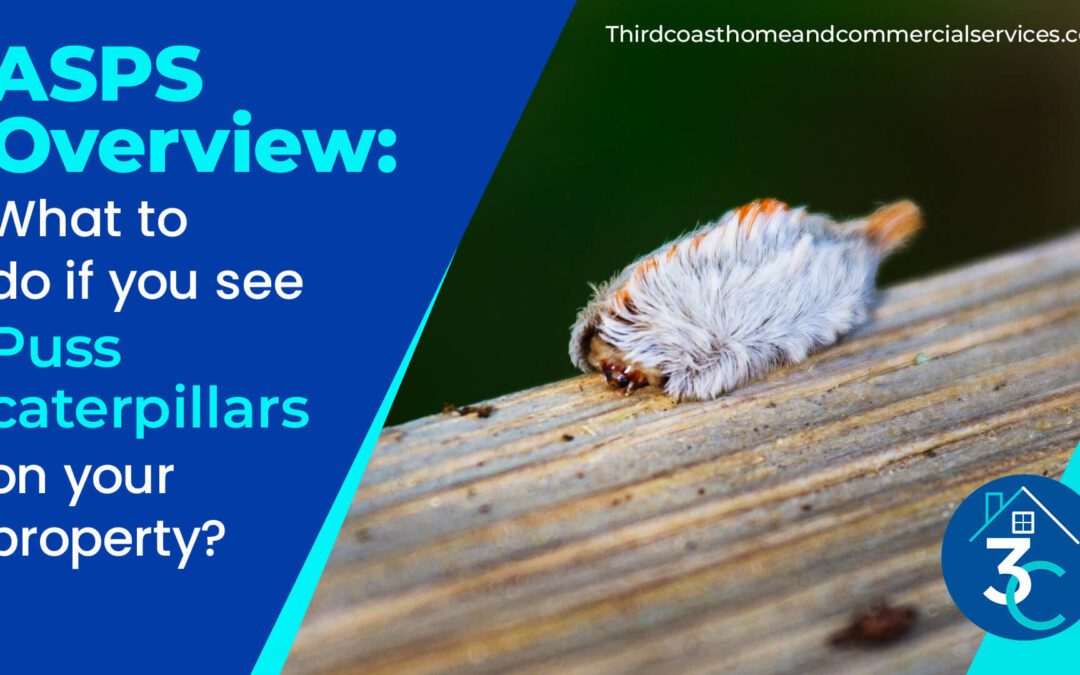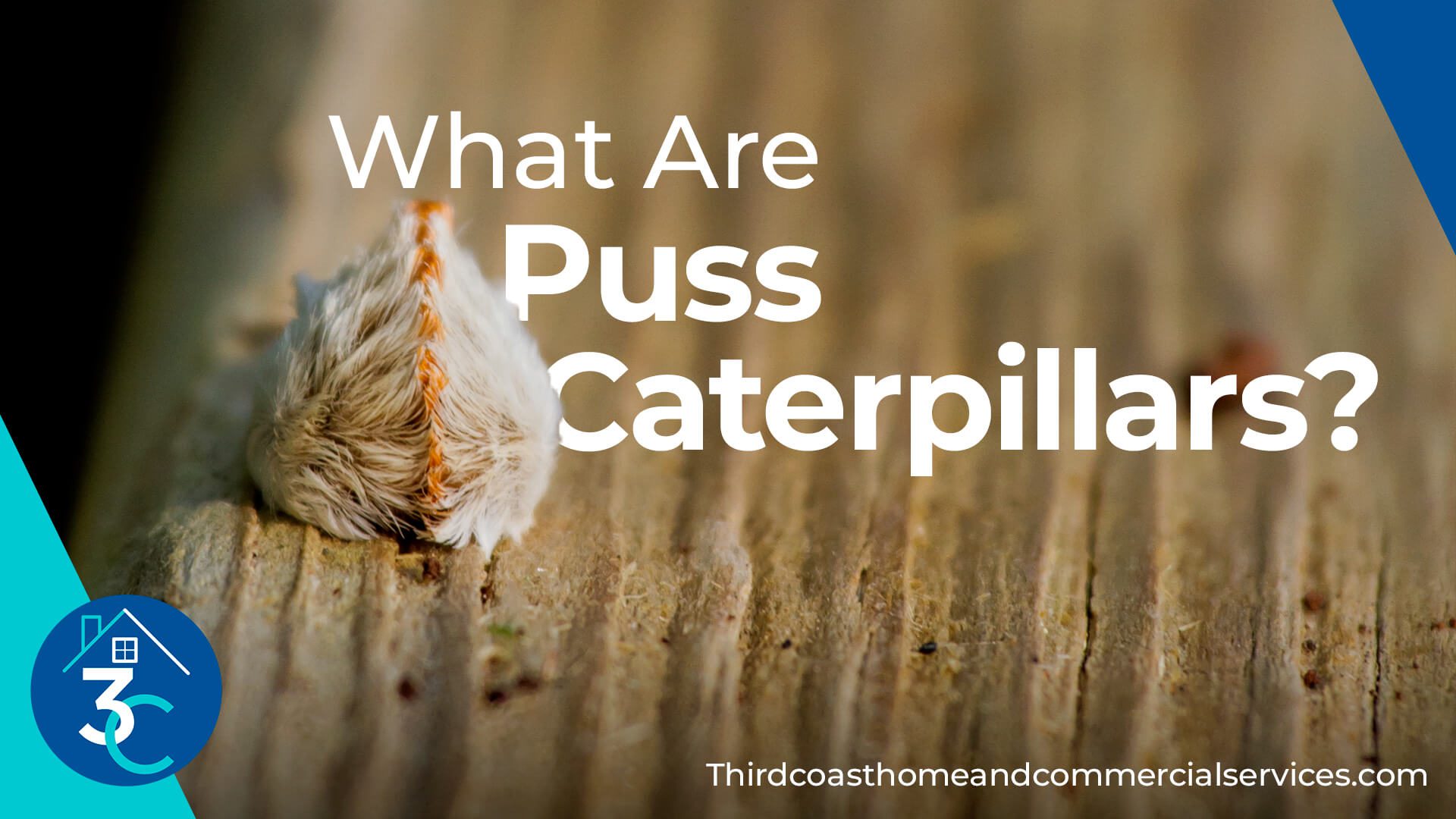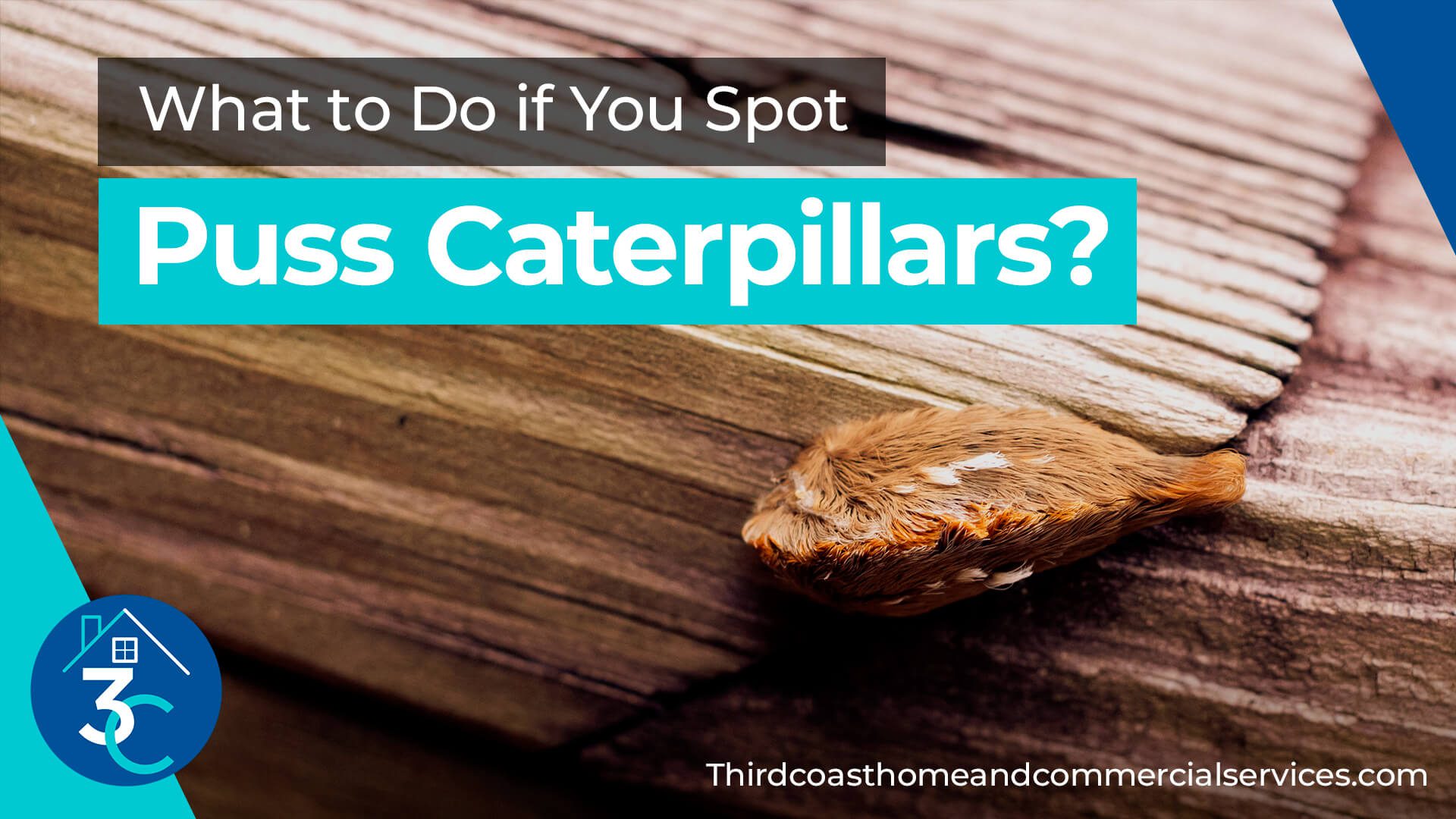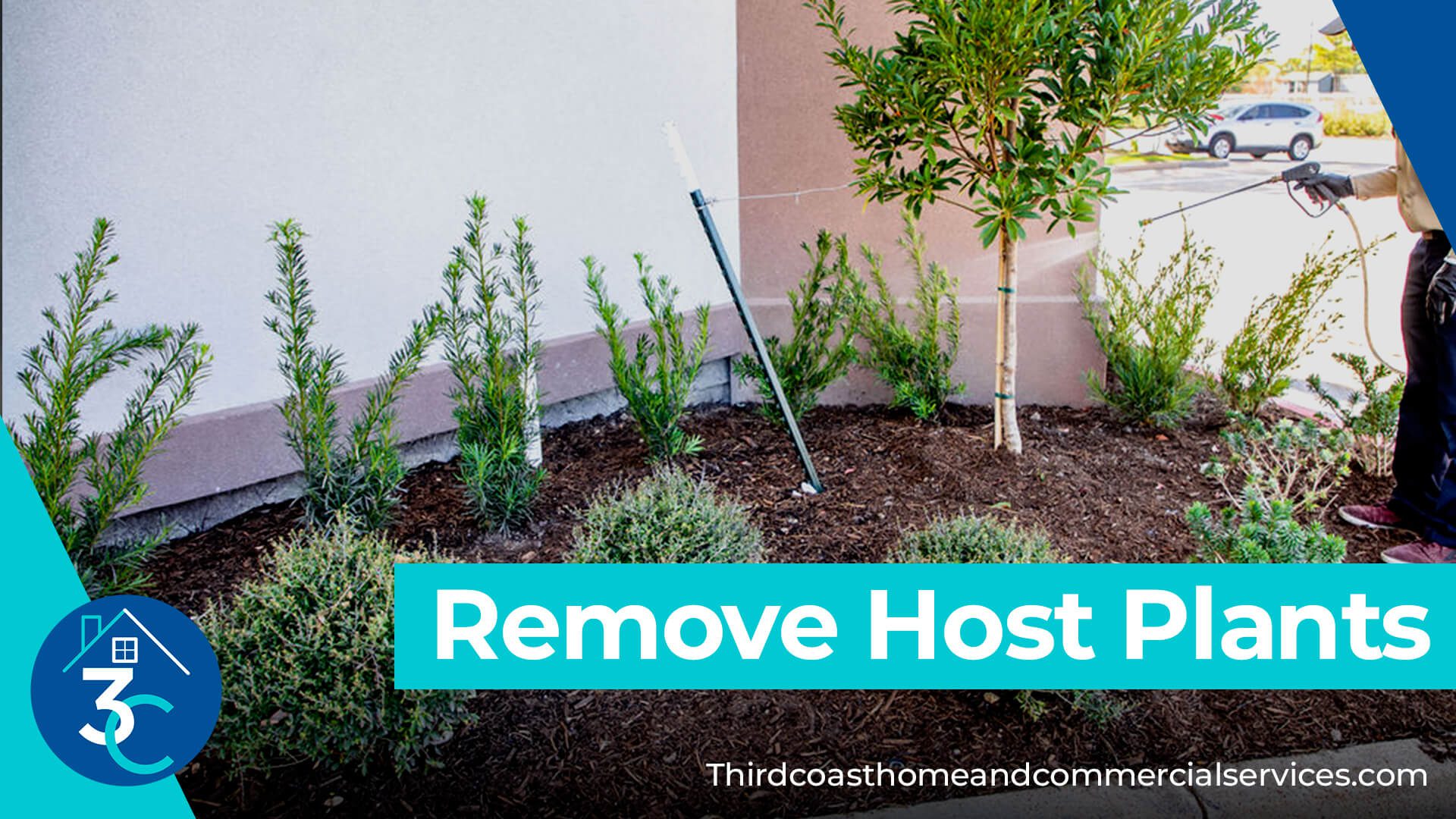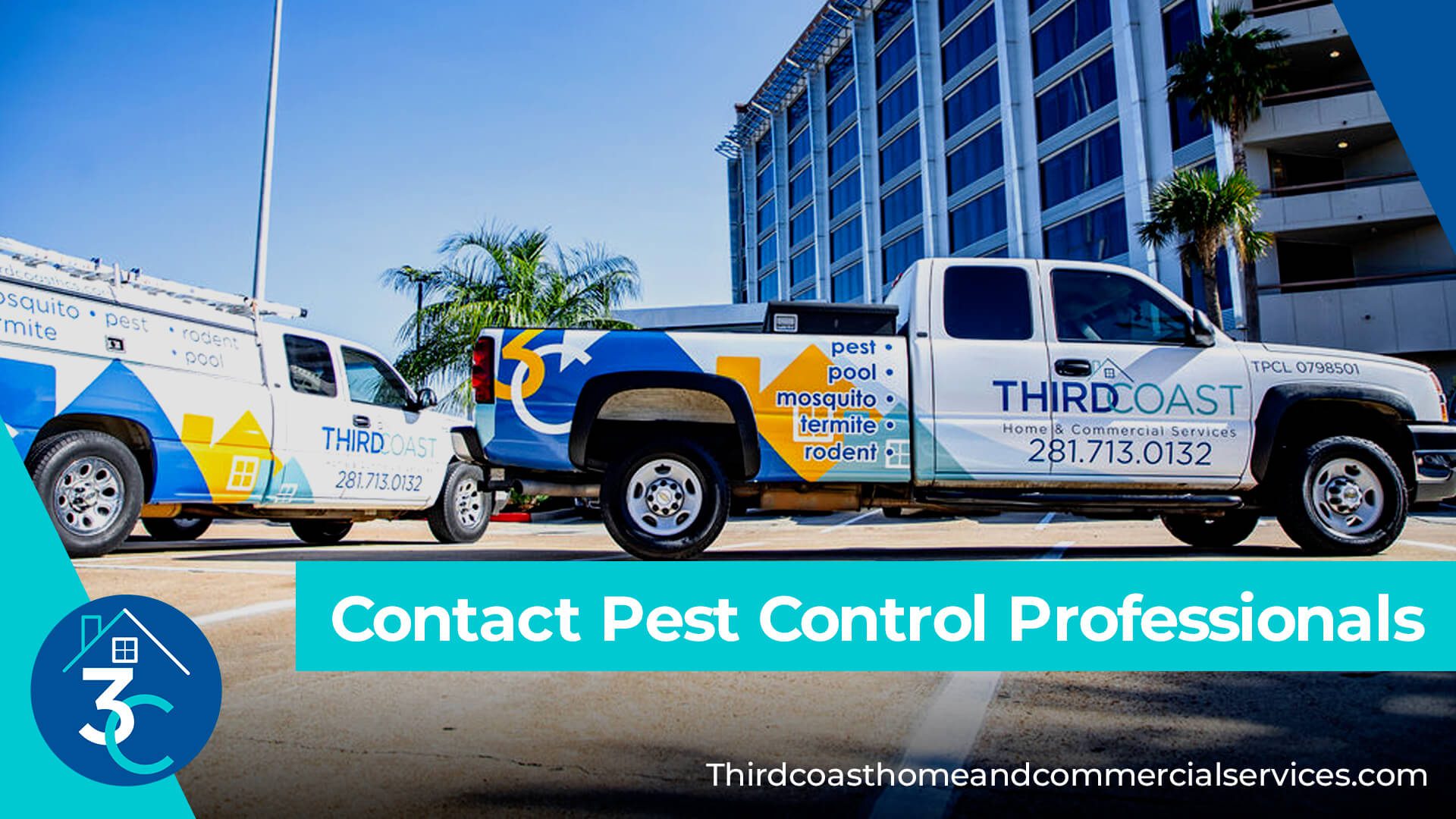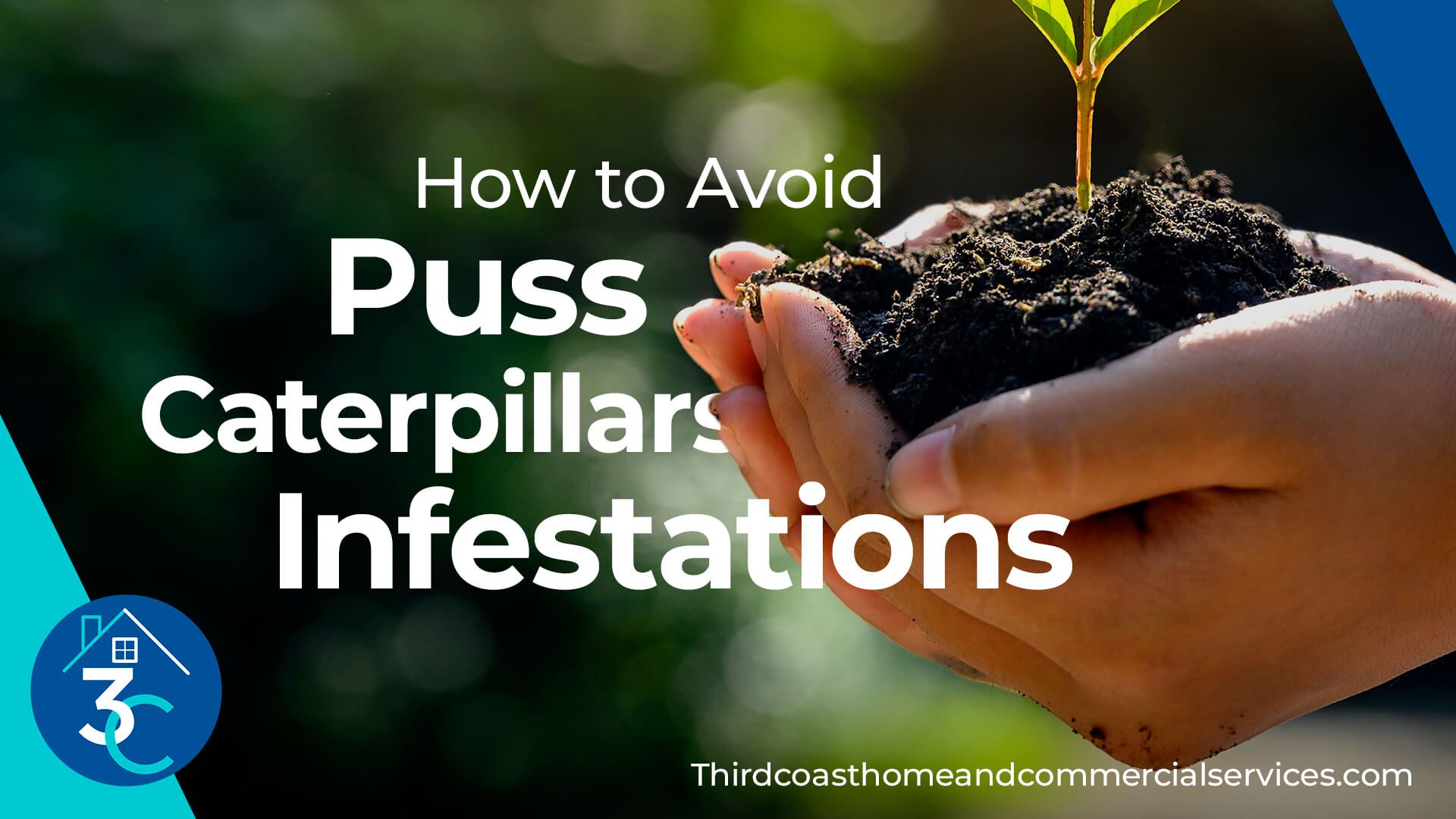It doesn’t matter if you’ve lived in Houston all your life or if you’re relatively new to the area. Either way, chances are you’ve noticed quite a few little critters in your yard, especially during the warmest months of the year.
Most of these creatures are harmless. There are some that can cause pretty serious problems if left to their own devices, though.
One of the most problematic pests that can take over your yard are asp caterpillars, also known as puss caterpillars. Read on to learn everything you need to know about these caterpillars, as well as what you should do if you see them on your property.
What Are Puss Caterpillars?
An asp caterpillar or puss caterpillar is a type of stinging caterpillar (that’s right, stinging – yikes!). They are about an inch in length and covered in fur that can be tan, whitish gray, or charcoal gray in color.
Because they’re furry and unique, many people (especially children) are initially intrigued by these little insects. They might even want to pick them up to take a closer look.
The problem with this natural urge is that puss caterpillars are poisonous.
Their fur is full of venomous spines that cause reactions (similar to allergic reactions) when they come in contact with a person’s skin. The venom can also cause swelling, blistering, and a burning sensation in some cases.
Puss caterpillars are found mainly in hot and humid areas (like Houston). They typically set up shop in wooded areas, particularly in oka, citrus, and elm trees. They may also reside in common garden plants like roses or ivy.
Not only are puss caterpillars poisonous, but they can also destroy your garden.
What to Do if You Spot Puss Caterpillars
Clearly, it’s best to get rid of these caterpillars as soon as possible after you spot them.
How do you do this, though? How can you free your yard from their poisonous presence without touching them and risking a reaction?
Here are some specific steps you ought to take if you spot any puss caterpillars crawling around your yard:
1. Warn Your Family
You know now not to touch puss caterpillars when you see them.
Make sure your family knows this rule, too.
Warn your loved ones, especially if you have kids, that these caterpillars can cause harm.
This will help you to avoid accidents while you work to get them out of your yard.
2. Learn How to Treat Stings
If you or a family member does get stung by a puss caterpillar, medical attention likely won’t be needed.
You can usually address the sting at home.
Start by washing the sting with soapy water and pulling out any embedded hairs left behind.
Use isopropyl alcohol to clean the area, then apply a baking soda slurry or calamine lotion to soothe itching or stinging.
3. Remove Host Plants
If you notice puss caterpillars crawling around on specific plants in your yard, consider removing them (if possible).
This will take away the caterpillars’ place of residence and encourage them to move elsewhere.
4. Protect Your Skin and Eyes
When you’re getting rid of plants that host puss caterpillars, be sure to wear gloves and goggles to protect your eyes (we’ve all accidentally rubbed our eyes while working in the yard and then regretted it later).
This will provide some added protection should you accidentally come in contact with a caterpillar.
5. Try a DIY Pesticide
In general, it’s best to avoid conventional pesticides when dealing with puss caterpillars, as common pesticides can get rid of beneficial insects or harm your plants.
A DIY option like soapy water or cedar oil mixed with water can help when you only have a few caterpillars in your yard.
6. Contact Pest Control Professionals
If you have a large puss caterpillar infestation on your hands, it’s best to let experts handle the situation.
Contact a pest control service that has experience taking care of puss caterpillars.
They will know what kind of pesticides to use that will get rid of the caterpillars without harming your plants or causing unnecessary damage.
How to Avoid Puss Caterpillar Infestations
One of the best ways to protect your yard from future puss caterpillar infestations is to avoid planting certain trees.
This includes the following:
- Oak
- Maple
- Elm
- Sycamore
- Dogwood
- Cherry
- Apple
- Plum
If these trees already exist on your property, you don’t have to uproot them.
Instead, you may need to take other measures to prevent puss caterpillars from returning, such as having your yard treated on a regular basis (every few months or so) by pest control professionals.
Take Care of All Your Pest Control Needs Today
The last thing you need in your yard is a puss caterpillar (or, worse yet, a whole group of them).
If you spot one of the furry creatures crawling around in your yard, be sure to follow the tips outlined above to avoid getting stung and to get them out as quickly as possible.
If you need professional pest control assistance making sure your yard is puss caterpillar-free (and free from other pests), we can help at Third Coast Home and Commercial Services. Contact us today to schedule an inspection and say sayonara to these creepy critters!

